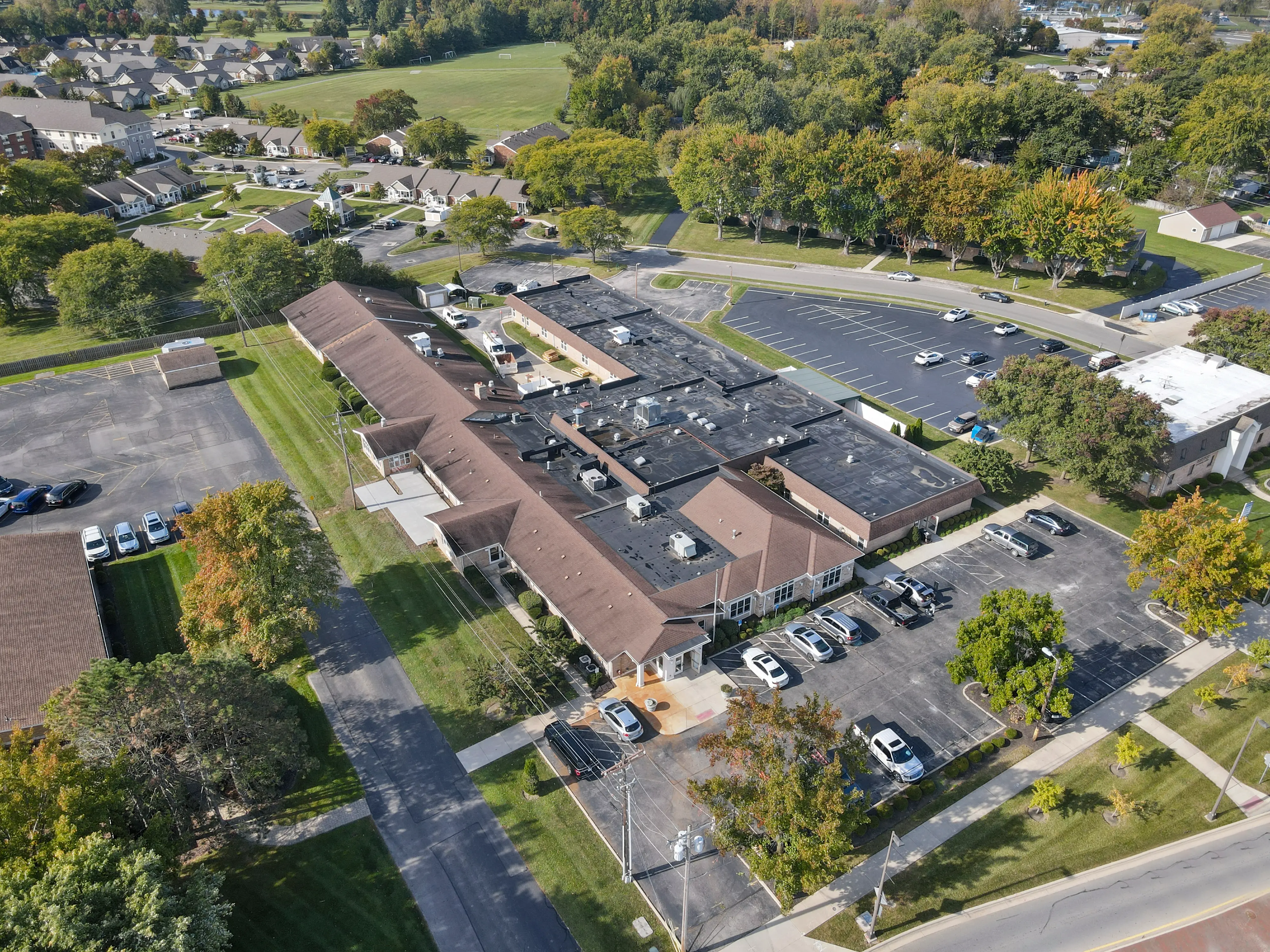Medication-Assisted Treatment Program In Kansas
.webp)
%20at%20Arista%20Recovery.jpg)
%20program.webp)
Medication-Assisted Treatment (MAT)
Medication-Assisted Treatment (MAT) at Arista Recovery
Recovery shouldn’t feel like a constant struggle. At Arista Recovery, our medication-assisted treatment (MAT) program combines evidence-based medications with compassionate, trauma-informed therapy to help you manage cravings, ease withdrawal, and build a strong foundation for lasting recovery.
Our treatment offerings are more than detox – they’re a complete reset for your mind, body, and future.
What Is Medication-Assisted Treatment (MAT)?
Medication-assisted treatment is a clinically proven approach that uses prescription medications alongside therapy to treat substance use disorders, especially opioid and alcohol dependence.
MAT medication-assisted treatment doesn't merely replace one drug with another. It stabilizes brain chemistry so you can focus on healing without fighting constant cravings or dangerous withdrawal symptoms.
At Arista Recovery, medication-assisted treatment starts with medical detox under the supervision of our experienced team, including our board-certified addictionologist.
You'll receive evidence-based medications like naltrexone or methadone tailored to your unique needs. These medications block the euphoric effects of opioids, reduce cravings, and normalize brain function without producing a high.
Therapy is integrated from day one. You'll work with licensed clinicians trained in cognitive behavioral therapy (CBT), dialectical behavioral therapy (DBT), and trauma-focused approaches. This dual approach addresses both the physical dependence and the emotional roots of addiction.
According to medication-assisted treatment statistics, MAT reduces overdose deaths by more than 50% and significantly increases retention in treatment programs. It also lowers the risk of infectious disease transmission and criminal activity.
Medication-assisted treatment certification is required for providers, and Arista Recovery meets the highest standards of care through our JCAHO accreditation and LegitScript certification.
.webp)

.webp)

Signs You Might Need Medication-Assisted Treatment (MAT)
Struggling to heal or detox on your own is not a personal failure. It's a sign that your brain needs medical support to break free from dependence.
You may benefit from MAT medication-assisted treatment if you experience any of the following:
- Intense cravings that feel impossible to control
- Withdrawal symptoms like sweating, nausea, tremors, or anxiety when you stop using
- Multiple unsuccessful attempts to quit
- Using opioids or alcohol just to feel normal
- Loss of relationships, employment, or housing due to substance use
- Co-occurring mental health conditions like depression, anxiety, or PTSD
- Fear of withdrawal keeping you trapped in active addiction
If you're unsure whether medication-assisted treatment is right for you, our admissions team can walk you through your options. We provide free insurance verification and confidential pre-screening to ensure we're the right fit.
Why Choose Arista Recovery?
At Arista Recovery, medication-assisted treatment is delivered with compassion, clinical integrity, and a commitment to whole-person healing. You're not a case number here. You're a person who deserves dignity, respect, and real support.
What makes Arista different is how we deliver evidence-based care. We combine medication-assisted treatment alongside innovative therapies like equine therapy, horticultural therapy, art therapy, and our synergistic recovery program.
These experiential approaches help you reconnect with yourself, build confidence, and develop healthy coping skills in ways traditional talk therapy alone cannot.




Supplementary Treatment and Care at Arista Recovery
Medication-assisted treatment works best when paired with comprehensive behavioral health services. At Arista Recovery, MAT medication-assisted treatment is never a standalone solution. It's part of a holistic plan designed to heal your mind, body, and spirit.
You'll participate in individual therapy sessions with a licensed clinician who specializes in addiction and trauma. Therapy modalities include cognitive behavioral therapy (CBT), dialectical behavioral therapy (DBT), motivational interviewing (MI), and trauma-focused therapies.
These approaches help you identify triggers, challenge negative thought patterns, and develop healthier ways of responding to stress.
Arista Recovery also offers a range of supplementary therapies to support your healing, including:
- Equine therapy to build trust, emotional awareness, and confidence
- Horticultural therapy to reduce stress and connect with nature
- Art therapy with a certified art therapist on staff
- Music therapy for emotional expression and processing
- Yoga and meditation to calm the nervous system
- Nutritional support and counseling with a chef on-site
- Recreational therapy to rediscover joy and healthy hobbies
If you're living with co-occurring mental health conditions like depression, anxiety, PTSD, or bipolar disorder, our dual diagnosis treatment integrates psychiatric care with addiction treatment.
Locations
Arista Recovery serves clients throughout Kansas, Missouri, Oklahoma, and Nebraska, with facilities designed for comfort, safety, and healing.
Our 38-acre residential facility offers medical detox and inpatient rehab in a serene, private setting. You'll have access to medication-assisted treatment, 24/7 medical support, and a full range of therapies. The campus includes outdoor spaces for equine therapy, horticultural therapy, and recreational activities.
Our outpatient location provides intensive outpatient (IOP) and standard outpatient services for clients stepping down from residential care or those who don't require 24/7 supervision. MAT medication-assisted treatment is available at this location with flexible daytime or evening scheduling.
Arista Recovery in Ohio offers the same evidence-based, compassionate care just outside Columbus. We provide medical detox, residential rehab, and outpatient services with medication-assisted treatment for opioid dependence.
All locations are staffed by licensed clinicians, medical professionals, and certified therapists who are committed to your recovery. We maintain low client-to-staff ratios to ensure personalized attention and support.


Start the Path to Healing
Recovery is possible – and you don’t have to do it alone. At Arista Recovery, our medication-assisted treatment program offers more than medical support; it’s a partnership in healing.
With compassionate care, evidence-based therapies, and ongoing guidance from our experienced clinical team, you can find balance, restore your confidence, and rebuild your life one step at a time.
If you’re ready to take the next step toward lasting recovery, Arista Recovery is here to help you start today.
Quick Admission Process
A simple & easy same-day admissions process
Contact
Reach out to our caring admissions team via phone, text or webform.
Verification
Get a free benefits verification form to confirm your coverage options.
Pre-screening
We will do a quick confidential pre-screen to ensure we are a fit for you.
Treatment
We will schedule transportation and your intake at Arista Recovery.
Quick Admission Process
See How Healing Begins
Watch a brief overview of our medical detox program and learn how our team provides safe, compassionate care to help you start recovery with confidence.
OUR LOCATIONS
Visit One of Our Trusted Locations
Access expert care and compassionate support at our accredited recovery centers across the Midwest. Each location offers a safe, welcoming space where lasting healing and growth begin..
Inside Our Detox Program
See How Healing Begins
OUR APPROACH
Our Unique Therapies
Explore our innovative approach to addiction treatment at Arista Recovery. From evidence-based therapies to holistic and experiential methods, we offer an immersive experience that works to treat the root causes of substance abuse our full continuum treatment programs
.webp)



FAQs
Frequently Asked Questions About Medication-Assisted Treatment (MAT)
Some common questions our team receives about MAT include:
Common medications include naltrexone and methadone.
At Arista Recovery, your medical team will determine which medication is safest and most effective for your situation. Medication-assisted treatment certification ensures all prescribing providers meet federal and state requirements.
There is no standard timeline. Some people benefit from MAT medication assisted treatment for a few months during early recovery, while others may benefit from long-term maintenance for a year or more.
Your treatment team will work with you to develop a tapering plan when you're ready. Stopping medication too soon increases relapse risk, so decisions are always made collaboratively based on your progress and stability.
No. This is a common misconception. Medication-assisted treatment uses FDA-approved medications that stabilize brain chemistry without causing impairment or euphoria.
These medications allow you to participate fully in therapy, rebuild your life, and focus on recovery without the distraction of constant cravings or withdrawal. Medication assisted treatment statistics show MAT significantly reduces overdose deaths and improves quality of life.
It depends on your level of need. Medication-assisted treatment for opioid dependence often begins during medical detox in an inpatient setting for safety and medical monitoring.
After detox, you may transition to residential rehab, partial hospitalization (PHP), intensive outpatient (IOP), or standard outpatient care.
Most commercial insurance plans cover mat medication assisted treatment as part of substance use disorder treatment. Arista Recovery is in-network with Aetna, Anthem, Blue Cross Blue Shield, Cigna, Humana, UnitedHealthcare, and many other major carriers.
Our admissions team will verify your benefits at no cost and explain your coverage, including any out-of-pocket expenses. We also offer self-pay options and payment plans.
.webp)

.webp)






